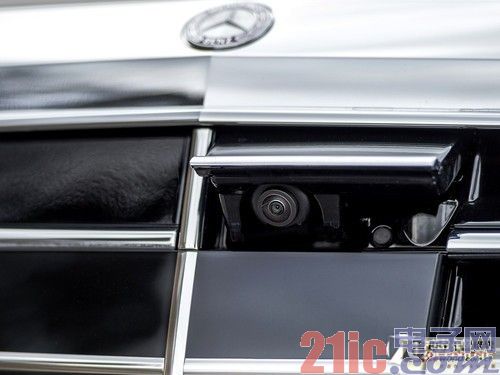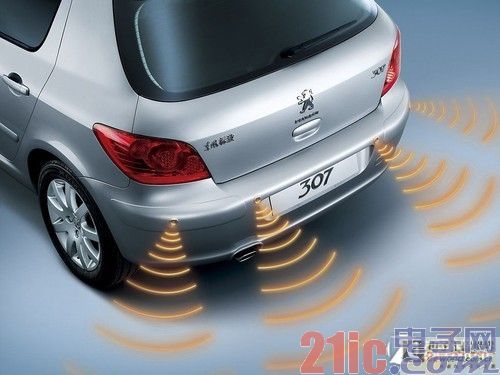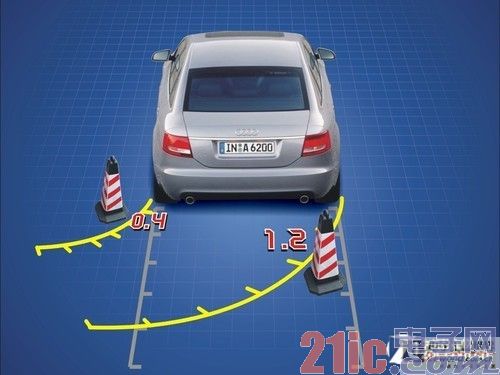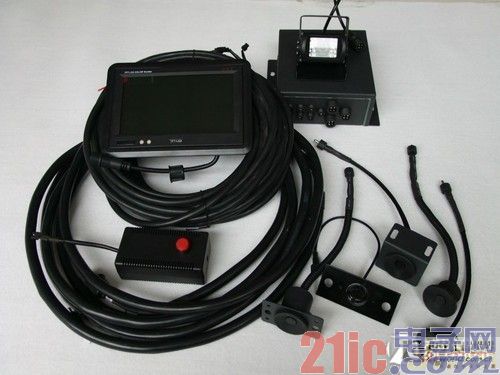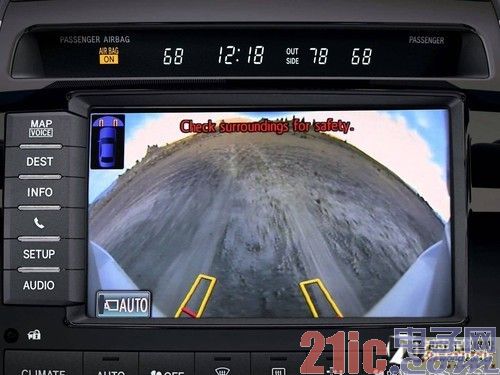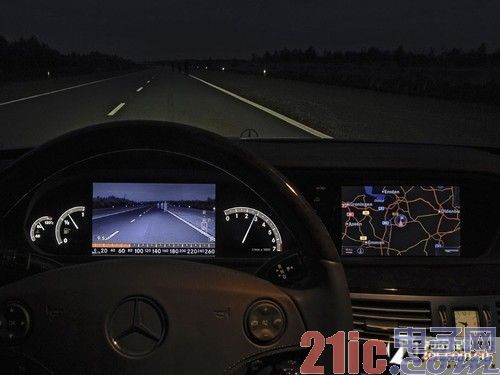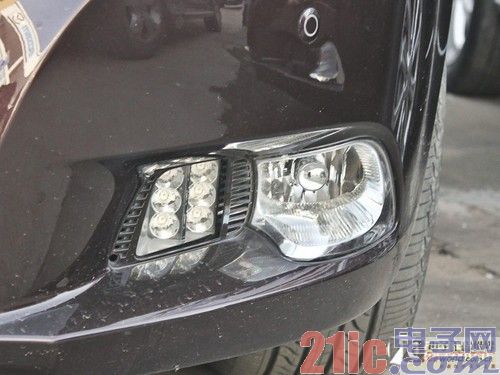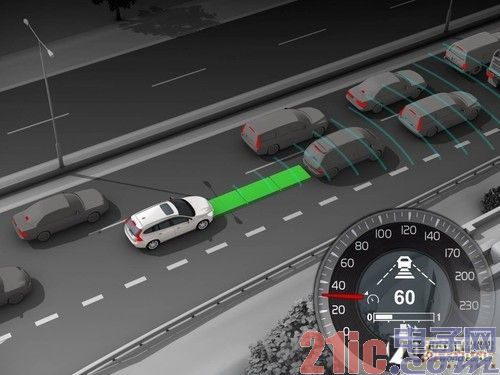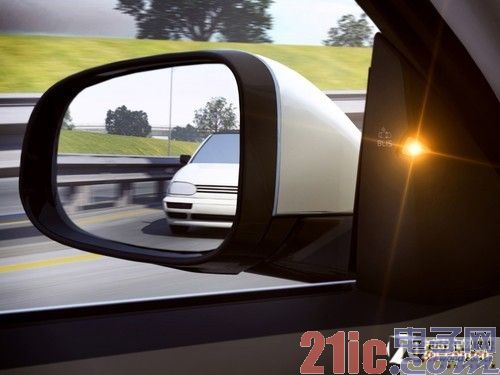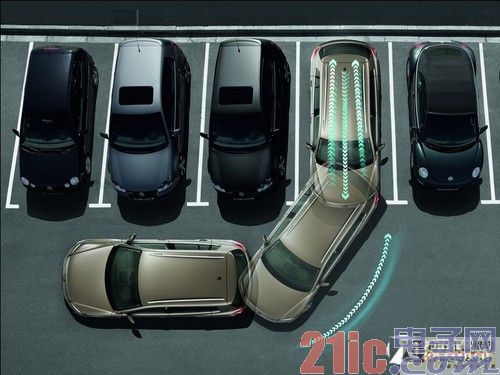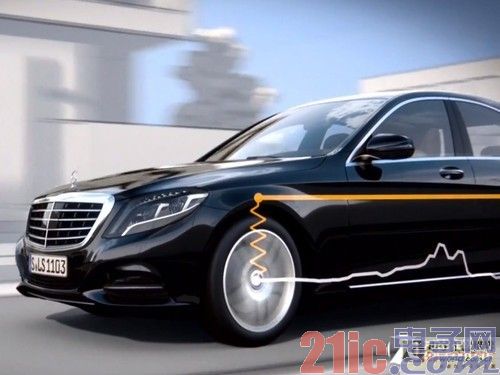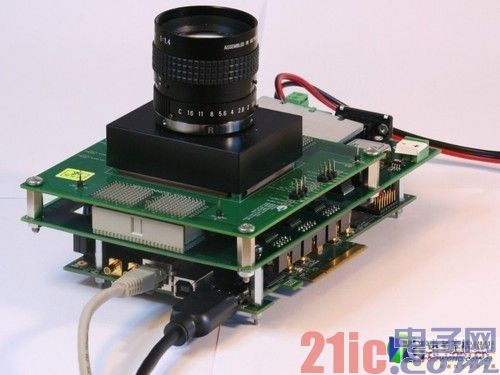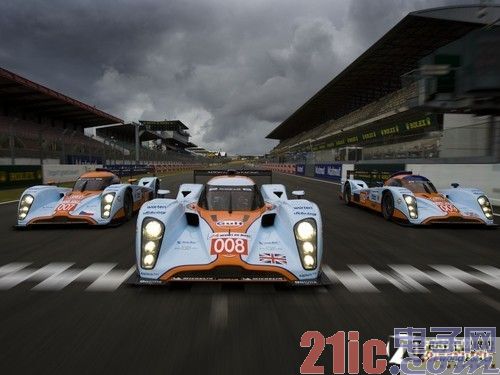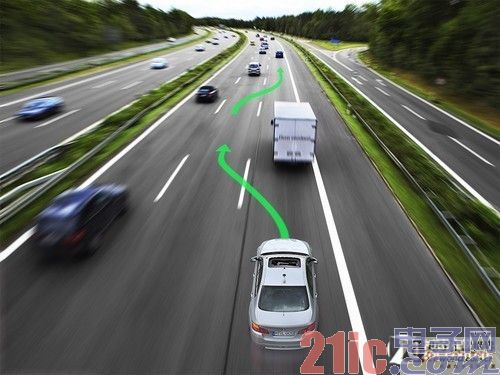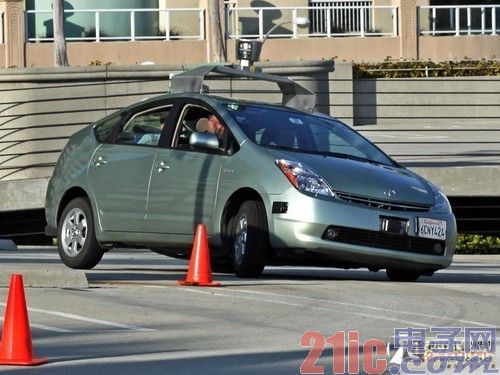Representing the future development direction of the car's imaging technology
The automobile industry has a history of 129 years, but the popularity of automotive electronics has only been more than 20 years. In these 20 years, the development of electronic systems is mainly based on automotive control systems, including electronic spray. Oil, electronic ignition, electronically controlled transmission and electronically controlled clutch, electronically controlled steering assist, even fixed speed cruise, electronically controlled suspension and so on. However, in recent years, a special trend has emerged, that is, the great leap forward of the car imaging system. Today, we are going to talk about the development of the car imaging system in the past few years, and what will happen to his future? . This article refers to the address: http:// The beginning of the preface is actually very early The car imaging system is a thing that sounds very high-end and even mysterious, but he is not so complicated. The “reverse image†system that many consumers often ask when buying a car is one of the most common car image products. The author's ability, we have no way to prove which car was the first to join the reversing image, but according to several experts around, similar systems have joined some large vehicles more than a decade ago, after all, the car body is bigger, The more visual dead angles. We can see the camera in more and more cars. This has become a trend. After that, the reversing image was introduced into the small car. We will know about the following things. The reversing image application is more and more widely used. Even some self-owned brand compact cars have joined the reversing image system, and even even appeared. Some models simply give up the reversing radar and replace it with a reversing image system. All in all, reversing images is the beginning of most people's understanding of car imaging systems, but at the very beginning of the article, we first give a definition of what car imaging technology is, and then talk about their applications and their future development. Defining a car image is a trick Although it is a bit frustrating to start with such a sentence, at present there is no precise definition of car image technology in the whole network or even the whole world, but here I can still simply summarize it, then use "optical imaging system" or "Ranging system"-based products can be regarded as automotive image related products. Many people may not know that the rangefinder itself is an image product. In other words, in fact, our most common image product should be the reversing radar, but the ranging system is not enough for ordinary people to "image", but from the technical principle, the distance measurement and imaging system are closely related. . From the technical history point of view, the reversing radar should appear between 1950 and 1960, while the domestic side is fully popular at the end of the 20th century and the beginning of the 21st century. Reversing radar is currently the most popular automotive imaging product After that, the image technology entered a period of rapid development. The reversing images and panoramic images belong to our more conventional cognitive products. The infrared night vision system is also a good extension. As for smart headlights, lane keeping, adaptive cruise, etc. All of them belong to higher-order imaging products, which are all based on the imaging system. A lot of "identification information" is added. Later, we will also explain in detail in the article, or follow the convention. First, let's take a look at the current What are the mature car imaging products? Reversing images at the beginning account for the first There are very few things that can be said about reversing radar, so we have to start with reversing images. When it comes to reversing images, the first thing to talk about is the most primitive reversing image system. He is very, very simple. He puts a small size camera in the middle of the rear of the car, and displays it on the center screen or in the side of the car's rear view mirror. Come out, this reversing image system can really help us to see the back of the car, but it still takes some time for the feeling of distance. This reversing image system is rarely seen now, even if it is a hundred-level system. A design that incorporates a guide line will also be used. The guide line function of the reversing image is very useful to mark the travel route of the car. So what is the difficulty of joining the guide line? In fact, it only needs to add some modifications to the output end. It only needs to calculate the width of the body according to the angle of view of the lens and the position of the lens, so that a good left and right hint can be given. However, there is still a problem with this kind of prompt, that is, he can't link with the steering wheel, and can only play an excellent guiding role when he goes straight to the library. There are many manufacturers on the market that have provided us with a complete reversing image. The system is often less than a thousand dollars. At this point, we need our guide line to change direction with the steering wheel, but it is not easy to achieve this function. First, we need our car to have real-time detection capability in the direction of the steering wheel. Then we need a dedicated port to export this data to The reversing image system performs calculations before the guide line and the steering wheel are synchronized. Therefore, the reversing images we have installed currently do not have this function, and some cars can not be completely installed. This is no way. Improve multiple perspectives easily Ok, since we can join the camera by reversing, can we not join other angles? Naturally it is ok. For example, BYD S6 and Accord 9 have similar designs. The driver can directly see the right front wheel position or right side in the car. The image of the square, if you happen to pass a very strict area of ​​width, this system can show a very big advantage, let the driver easily pass here. The panoramic image system is a multi-directional version derived from the reversing image system. Of course, some manufacturers think that since they can add one, plus two, then all add up, this is one of the more popular products - panoramic image system. The panoramic image system of different brands and different models is not the same (and the reversing images are basically the same). It can even be said that the concept is different. For example, the current panoramic image system of Mercedes-Benz, four cameras are located in the front center and the rear center. The lower part of the two exterior mirrors can be automatically combined into a complete image of the surrounding car. The essence is to simulate a 4-point omnidirectional ranging, which brings great convenience to parking. The MTM system on Prado and Rand Cool Road is another variant of the panoramic imaging system. There are also some off-road vehicles that have joined the panoramic image system, but for the sake of passing. Toyota Prado has added blind area imaging systems on the front wheel, 2 front side, 2 rear side, and rear part. When the road surface is uneven, you can observe very close front, very close side, etc., such as the front lens. Also added to the wheel direction simulation, this system will have a very large use if you happen to be on a road with very obvious ups and downs. The revolution introduced infrared to watch the night Then let's talk about the night vision system. The basis of the night vision system is the infrared imaging system. It may be that many people think that infrared imaging is more than the high end of the camera, but the sensing wavelength of modern sensors is very broad, infrared image. The difference between a sensor and a visible light sensor is often only the difference between the front color filters. According to the current industrial level, a device that can basically be night vision is made, and the cost is less than 1,000 yuan. The night vision system first appeared in high-end cars but it was not until S Class 2014 that it had a comprehensive reminder function. But why is the current night vision system of cars still rare? Apart from the legal and related policy factors, night vision does not bring a good night vision. The fundamental reason is that even infrared light is not the same at night. adequate. Some people may say that military infrared equipment is not the same? If you remove the cost factor, there is a big difference. Military infrared equipment is used to search for heat sources (usually human body), while automotive infrared equipment is for roads. It is not a heat source. Therefore, car manufacturers often add infrared light to the front of the vehicle to supplement the infrared light to achieve better lighting effects. However, infrared lamps are not as cheap as infrared image sensors, which is the main cost of night vision systems. In order to ensure the night vision effect, the car manufacturers have added infrared light sources (the left 2 × 3 array in the figure) In the end, I put all of the above into it, the infrared is enough, the screen is well imaged, and there is still a gap that humans can't cross, that is, the objects we see everyday are colored, but infrared nights. The system is monochrome, and the brightness ratio is very inconsistent with what we see everyday. If you simply rely on this system to drive, I am afraid that an accident is inevitable. Therefore, manufacturers such as Mercedes-Benz will spend a lot of money to develop infrared object recognition systems, and provide detailed information on the screen to ensure the safety of the vehicle, which is the main reason why the current infrared night vision system is rarely used. Intelligent recognition on the road All of the above are all car imaging systems that we can intuitively recognize. In fact, some of the assisted driving aspects are also based on the secondary development of automotive imaging technology, such as the current ACC adaptive cruise on high-profile vehicles. It is through the real-time working distance measuring system (often combined with ultrasonic and radar) to measure the distance and speed of the preceding vehicle from the current vehicle, while controlling the speed of its own vehicle. Of course, some of the more advanced ACC adaptive cruise systems also use optical sensors to collect more data to ensure better results. ACC adaptive cruise is a combination of ranging, speed and speed control The basis of the lane departure warning system and the lane keeping system is optical recognition. First, the camera reads the front picture information through a relatively high frame rate, and then analyzes the direction of the lane through the processor. Since the lane is inherently high-contrast, It is possible to read the direction of the lane and combine the direction information of the car itself to find out whether we deviate from the lane and deviate from the data. This is the lane departure warning system. If the system is associated with the direction control system, That is the lane keeping system. The parallel line assist system is relatively simple but effectively prevents low-level traffic accidents The parallel line auxiliary system is actually more complicated, mainly based on radar. There are also some optical products. Generally speaking, it relies on a specific radar to send signals to a specific direction. As long as the vehicle appears in the corresponding interval, the driver will be given a Cannot be wired. This feature is very useful for some friends who have very bad driving habits. After all, most of the hustle and bustle in the city is due to the fact that they are connected. Leap forgotten the development of images The re-development of automotive imaging technology is actually very videoless, but it can't be separated from the deep development of imaging technology. For example, smart headlights are a good example. The basis of the intelligent headlight system is also optical recognition. Some may also add the ranging system as an aid. Of course, the optical system of the smart headlights is not used for object recognition, but for brightness recognition and highlight point recognition, plus ranging. The system assists, can well determine the position of the opposite vehicle, and decide whether to turn the corresponding lights on and off. At present, the smart headlight system still has a high turnover rate, but at the very least, there will be no situation where the headlights will sway. The automatic brake system is similar to adaptive cruise, but the automatic brake system is more complicated than adaptive cruise. After all, the probability of appearing at the front is very high. If the automatic brake system is too sensitive, it will bring a lot of Troubled. Therefore, the automatic braking system of the vehicle now adopts the optical + ultrasonic ranging dual mode, which not only needs to detect the distance of the object in front, but also needs to optically recognize the object to identify whether there is something in the front, otherwise the reflection of the ultrasonic wave may cause the error. The result of the brakes, the rear-end is also inevitable. The automatic parking system is definitely the master of all kinds of imaging technology. The automatic parking system is also the focus of many brands of high-tech technology. He can be regarded as a comprehensive application of complex imaging technology. The traditional automatic parking system design does not require an optical system. As long as ultrasonic ranging can be used, relatively advanced automatic The parking system will use optics as an auxiliary identification, which can ensure that the parking position is positive enough and the distance between the front and the back is appropriate. Magic body control is a technology that is completely detached from the image. If you put a little more high-tech, it is Mercedes-Benz's latest magic body control system. This system is also based on optical recognition, but the amount of information collected is very large. The body collects ground information through the optical system, and then calculates the undulation of the road ahead, and then actively adjusts the suspension height according to the speed of the vehicle. This can be said that the current image technology is the most sophisticated application on the car. Lagging behind research and development time is a problem These are the main components of the current imaging system. Some of the control-related functions may be difficult to understand, but at the very least, we have a deep understanding of the resolution of the reversing image system. Although reversing images have become a more mainstream feature, we often feel that the resolution of reversing images is too low and looks quite blurry. 10 years from development board to finished product But if we take a look at the current level of upstream manufacturers can do it? A complete set of guide lines can not move 1080P fisheye camera + 8 inch 1080P screen can control the cost in the early 1000 yuan, but the current reversing image system can reach The 1080P resolution is very few, and the price of the car is six digits. Obviously, the cost is not the main problem. The Le Mans 24 Hours is one of the best games to show the durability of the car. So where is the problem? Since the car is a product that works at any time, the stability requirements of the components are very high. Although most of the image products are external to the control system, it is still unforgivable to have problems. So we are currently seeing these car imaging systems very backward, not because they can't afford the money, but because they need too much time to develop and demonstrate reliability. Future autopilot is here On the previous page, we said that the current car imaging system is behind the entire imaging system, but behind it, car imaging technology will be the most important part of the development of the entire automotive industry in the future. After all, the foundation of autonomous driving technology is environmental detection. Measurement technology, while environmental detection technology relies on imaging technology. Moreover, the price of the image product itself is very low compared to the car. I believe that the full popularity is not a difficult matter. I want to do the automatic driving in the picture above, I am afraid there are still many years to go. However, automotive imaging technology still faces a big problem. The problem is that the amount of information is too large. Although collecting the surrounding environment can be very simple to rely on the form of increasing the number of sensors, but even if a very large number of environmental conditions are collected, the analysis and processing can not be avoided, the object recognition algorithm becomes the most important, the theory of the arithmetic unit. Capabilities are also very important factors. Today's cars are still using the ARM low-power processor of the Terga. It is obviously extremely difficult to process a large number of high-resolution and high-sampling video streams. Google’s self-driving cars that have been exposed before have already had considerable maturity but can’t avoid human intervention. All in all, automotive imaging technology must be the focus of future advances in car manufacturers. The high-tech functions mentioned above will also be an important indicator for measuring the technological content of a car. Of course, in addition to imaging technology, and the Internet let me combine the application, electric drive technology will become the main heart of the future development of the car. In the future, we will not know who we are, and we can only do what we can do now. Let us do our best. Please look forward to it!
The 6KV/6.6KV Medium Voltage Variable Frequency Drive is a product accumulated by FGI for over 20 years. The system adopts modular design, mainly including phase shift transformer cabinet, power unit cabinet and control cabinet, etc. The Mv Vfd has the advantages of low input harmonic content and high power factor. The High Voltage Drive is widely used in pumps, fans, woodworking machinery, cement production and other industries.
6Kv And 6.6Kv Medium Voltage Drives Mv Drives,Mv Vfd,High Power Motor Drives,6Kv And 6.6Kv Medium Voltage Drives,Medium Voltage Motor Starter,High Voltage Motor Controller FGI SCIENCE AND TECHNOLOGY CO., LTD , https://www.fgi-tech.com